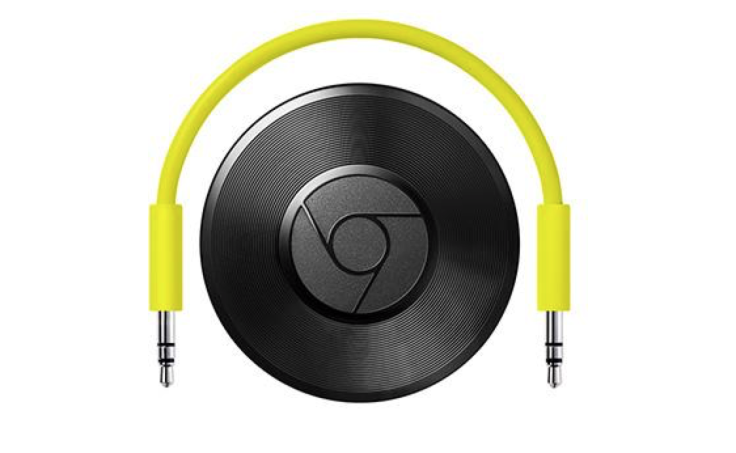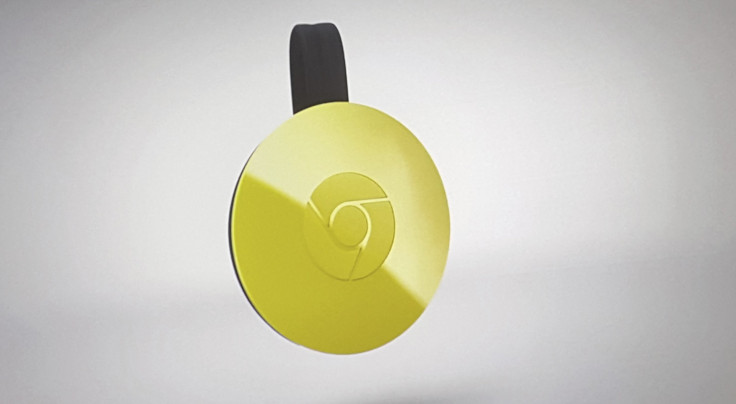Google's Chromecast Audio Turns Your Old Speakers Into A Connected Sound System

LONDON -- Google has launched two new versions of its Chromecast dongle, one of which is aimed at turning your old speakers into a smart, connected sound system. Chromecast Audio was launched alongside the second generation of Google's popular Chromecast streaming dongle at a media event in San Francisco on Tuesday. The company said it will allow users go to "beyond the TV screen to different parts of the house." The new Chromecast and Chromecast Audio will be available from Tuesday through the Google Store priced at $35.
Chromecast Audio works by simply plugging into your speaker through the 3.5 mm audio jack, connecting it to the power supply and hooking it up to your Wi-Fi network through the Chromecast app on your smartphone. You will be able to then play music through the speaker of any device (Android, iOS, Windows, Chrome OS and Mac OS X) connected to your home Wi-Fi network. For smartphones you will need apps that are cast-enabled, such as Spotify, Google Music, Pandora, TuneIn Radio and BBC iPlayer Radio.
You will then be able to use your smartphone, laptop, smartwatch or tablet to control the playback and volume of the music you are playing. "Because we are playing through Wi-Fi, we can get rid of all the problems of Bluetooth," Google said. Those problems include having calls or notifications interrupt the stream when you are playing music, something the Chromecast Audio eliminates.

The device works with a variety of inputs, including 3.5 mm headphone jacks, RCA and optical inputs, meaning the device will work with a wide variety of speakers, some of which may have been in your house for many years. Google says that at $35, Chromecast Audio is a budget way of creating a multiroom sound system for your home.
Like the original Chromecast, the system allows users to continue to use their smartphones or tablet for other things without interrupting the stream of music. Again like the original device, friends and family who have joined your home network also can use the system and collaborate on playlists.
Google's Chromecast Audio will appeal to those looking to upgrade their existing system but who may have been put off by the high price of systems such as Sonos, which can cost over $1,000 for a multiroom system.
The New Chromecast

Alongside the launch of Chromecast Audio, Google also announced the launch of a new version of the original Chromecast, focused on video and images. The new Chromecast has been redesigned dramatically to resemble a miniature hockey puck and comes in three colors: black, yellow and red.
Internally the updates include an adaptive antenna system with support for the faster Wi-Fi AC standard as well as the 5GHz frequency which should allow for much faster load times and less dropped or buffering content. Google has also re-engineered the device to include an integrated HDMI cable, making it easier to plug into crowded ports. However, Google hasn't included support for 4K video, keeping it at full HD.
Google also has overhauled its Chromecast app, which will be used to connect to the old and new Chromecast as well as Chromecast Audio. The new iOS and Android apps will be a central repository of content, showing apps that support the device in one place and allowing you to find new content from apps already installed on your phone. Google announced that Showtime, NBA and Sling TV would be adding cast support to their apps.
As Apple did with its fourth-generation Apple TV set-top box, Google has integrated some gaming elements into Chromecast, with cast-enabled games such as "Angry Birds," "WGT Golf" and "Driver Speedboat Paradise," allowing users to control the game with their smartphone or tablet.
Google also will introduce a feature called Fast Play to enable app developers to preload content so that by the time you press the play button the content is ready, with Google claiming wait times have been reduced by up to 80 percent. This feature won't be coming until 2016, however.
© Copyright IBTimes 2025. All rights reserved.





















